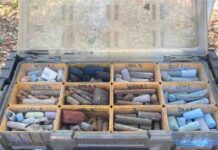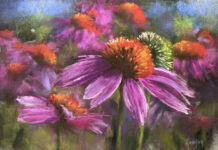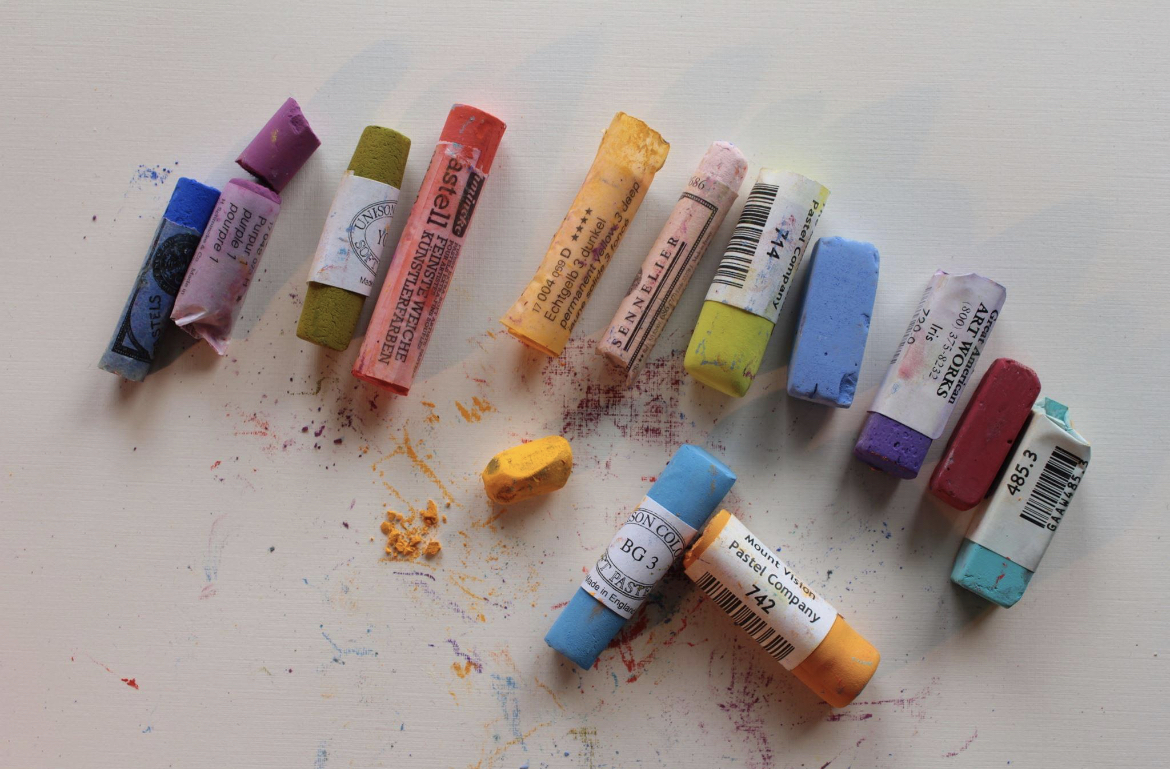
When you’re working with soft pastels, the reality is that there’s going to be dust. Pastels are dry pigments held together by a binder and formed into a stick that’s then applied to a surface, usually paper. Soooo there’s gonna be pastel dust fallout! It’s an inescapable part of the process but that doesn’t make it any easier to accept. That means it’s a bit of a messy medium to use. The other thing that’s really more important is the health concern.
The main health concern around pastel dust is inhalation so it’s important to take proper precautions. (You don’t have to worry too much about handling it as there’s no solvent such as turpentine to transfer the pigment through the skin.)
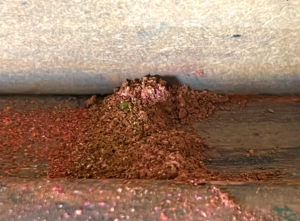
Pastels are meant to be picked up and used. Let’s look at 9 ways to deal with pastel dust so that you can minimize its effects on your health, environment, and work.
1. Do NOT blow the dust off your work!
Oh my gosh, please don’t do this! Blowing the dust off your work, as tempting and easy as that may be, will put the dust into the air where you have a chance of inhaling it. And as I said, inhalation is the health hazard of working with pastels. Instead, take the work outside and gently tap it on the back to remove any loose dust. I know this takes effort but please do this!
2. Work at an easel
A way to get around the need to blow dust away is to work at an easel rather than working flat. When you’re working at an easel, the dust doesn’t have a chance to settle on your work surface and therefore lessens the need to blow the collecting pools of dust. Instead, the pastel falls into the easel tray as you work.
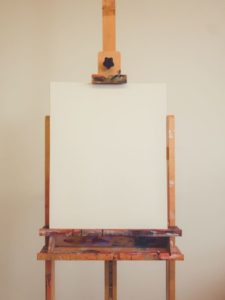
3. Position your easel slightly forward from vertical
So you’re working at an easel. Yay! Now, tilt your easel slightly forward. Yes, forward. This allows the pastel dust to fall straight onto the easel shelf rather than getting caught on the work itself. If you’re working on the top portion of a piece, pastel dust will fall but if the easel leans away from you, the dust will sprinkle all over the lower part of your painting. By leaning the easel slightly towards you, the dust falls straight into the tray, missing your work altogether.
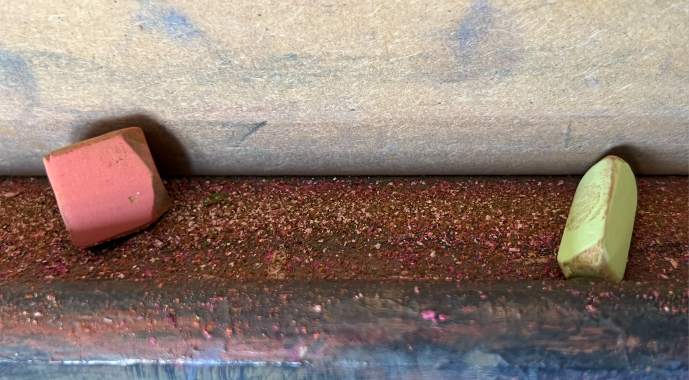
4. Prep your easel tray
So you have your easel tilted forward, but what about all the dust collecting on the easel shelf? Add something to the easel tray to collect any falling dust. This can be a piece of tin foil, a handmade tray (I’ve seen someone use a piece of soffit guttering!), or a dampened cloth.
5. Use a vacuum cleaner
A great idea is to get a small, handheld vacuum cleaner often called a dustbuster. It’s convenient and easy to use while you’re working. This is especially helpful if you’re working on a large project and there’s a lot of dust buildup. Just be careful not to vacuum too close to your work surface or you’ll risk damaging it! The negative about using a regular large vacuum cleaner is they have an exhaust so make sure you have that facing away from the dusty area, otherwise, it can blow on the dust you’re trying to remove and put it into the air. Uh oh.
6. Wipe up frequently
You can use a damp cloth to wipe away the dust from your work surfaces. This is a good option if you don’t want to get out the vacuum cleaner. When you’re finished painting, be sure to clean up your workspace.
7. Wear studio clothes
If you wear specific clothes and an apron in the studio, they can stay in the room and not carry dust all over the house. I like to do a separate wash with all my studio clothing, aprons, and wiping-up cloths.
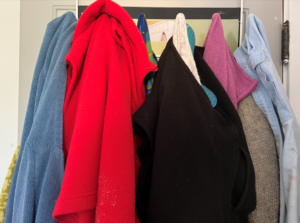
8. Consider getting an air filter
If you’re really sensitive to pastel dust, you may want to consider getting an air filter for your studio. Place it close to your easel to catch any falling dust.
9. Wear a mask
In this time of the COVID-19 pandemic, we’ve gotten used to wearing masks. You might consider wearing one in your studio and this will certainly protect you from inhaling dust. A simple dust mask will do the trick.

Follow any of these suggestions and you’ll be able to enjoy your pastel painting experience with less dust flying about. If you have any other suggestions for dealing with pastel dust, please share them in the comment section below.
The main thing to remember is that although you may be okay with the mess that pastel dust can make, any danger from soft pastels comes from breathing in the dust. So be most careful with that.
Reserve your spot now for the next Pastel Live and get more insider tips and techniques from some of today’s top pastel artists!


